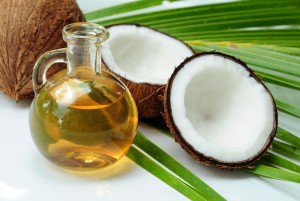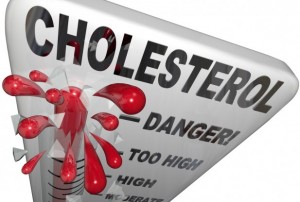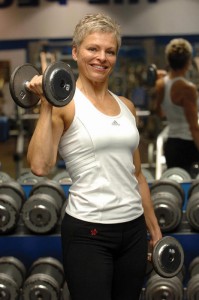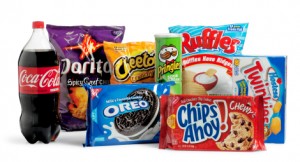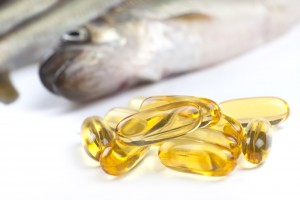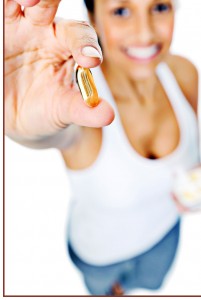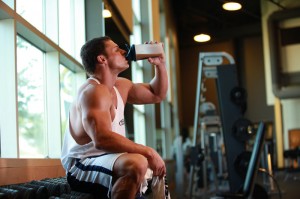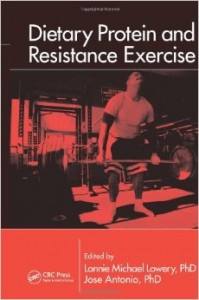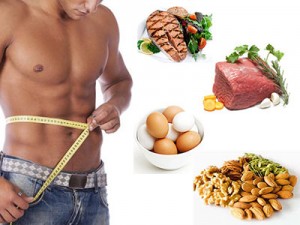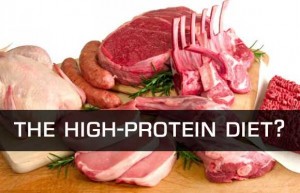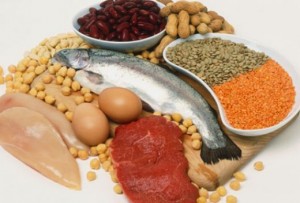by Jose Antonio PhD. For those of you who know me, you’re well aware that I’m pretty lazy when it comes to bs’ing you. It takes too much work and frankly, it’s just a waste of time. If you want a straight answer, I’ll give it. If you want a sugar-coated answer that’ll make you feel better, go ask your Mommy. So what’s with the sardonic prelude? 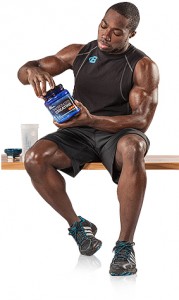
First a little edification. I teach at Nova Southeastern University in Davie FL. I try like a madman to instill lessons in critical thinking. Any monkey can memorize and regurgitate information. But true learning occurs when you can think critically and independently. Sometimes the mark of a good thinker is when you realize the more you learn, the more questions you have. Often, those who are uneducated don’t know enough to know what they don’t know. Hence, they succumb to ‘bro-science.’
I implore students to think for themselves, look up the data, and not just believe what your buddy at the gym says. When I read just plain stupid sh#* like “creatine supplementation is bad for your kidneys,” it would be like a rocket scientist at NASA reading “the Earth really is flat.” Ask yourself, “is there data to support the statement?” Certainly, if you are looking for 100% agreement on anything scientific, then you my friend are in the wrong field. The only guarantees are death and taxes. So how does one come to a reasonable and smart conclusion about sports nutrition?
As they say on one of my favorite TV Shows “CSI,” ‘just follow the data; the data will tell you the answer.’ So in essence you’re a sleuth looking at the evidence, the clues, and the data. With regards to creatine, the data are so voluminous, so robust, so convincing that it would be idiotic to believe otherwise. Unless of course you’re so skeptical that you think apples might rise tomorrow.
So here’s the lowdown on creatine.
To wit: I gave my two-cents worth of supplement advice vis a vis “The Creatine Report” by Nick Tumminello and Lou Schuler. It is a nice, informative, and consumer-friendly piece on the most widely researched sports supplement in the history of  mankind. For a copy of the report, go to http://www.freecreatinereport.com/. Nick and Lou did an excellent job outlining the facts and dispelling the myths associated with creatine. One would think that with the HUNDREDS of randomized clinical trials on creatine the myths promulgated by the educated and uneducated would cease. But alas, I am mistaken.
mankind. For a copy of the report, go to http://www.freecreatinereport.com/. Nick and Lou did an excellent job outlining the facts and dispelling the myths associated with creatine. One would think that with the HUNDREDS of randomized clinical trials on creatine the myths promulgated by the educated and uneducated would cease. But alas, I am mistaken.
Apparently, one must never underestimate the stupidity of the general public (or the learned medical professional). Nick was kind enough to share with me some of the questions/comments that he received regarding creatine. To say some were just god-awful idiotic would be an insult to idiots. Moreover, the gross ignorance demonstrated by so-called experts (i.e. the Mayo Clinic) is just plain embarrassing. Below are some of the questions he received. For me to answer each of them in detail would be like asking a physicist to explain why apples fall from a tree rather than rise. Yep, we still have flat-earthers out there. My response is easy to see. It’s after my initials.
Questions from readers who slept through Biology 101.
– Is there any quality research showing Creatine doesn’t work? If so, should these results affect our decision to take creatine?
JA: Of course there is good research out there that shows creatine does not have an ergogenic effect. If you’re looking for 100% agreement in science, then you’re a fool. Imagine giving aspirin to 100 individuals with a headache. Ninety of them respond favorably and 10 do not. And let’s say that’s the general pattern throughout the scientific literature. So does that  mean aspirin works (for treating headaches)? Or not? Scientific conclusions are based on the PREPONDERANCE of the evidence. And it is clear that the preponderance of the evidence points to a robust ergogenic response from creatine supplementation. Sure, it doesn’t work for everyone. But then again what does? For a scientific summary of creatine, please read the ISSN’s Position paper on creatine.[1] http://www.jissn.com/content/4/1/6
mean aspirin works (for treating headaches)? Or not? Scientific conclusions are based on the PREPONDERANCE of the evidence. And it is clear that the preponderance of the evidence points to a robust ergogenic response from creatine supplementation. Sure, it doesn’t work for everyone. But then again what does? For a scientific summary of creatine, please read the ISSN’s Position paper on creatine.[1] http://www.jissn.com/content/4/1/6
– Some people say creatine made them bloated. Is there any scientific evidence behind these claims? What do you say to people when they make (or repeat) this type of claim?
JA: The problem with the word ‘bloated’ is that it has no scientific meaning. How do you measure bloatedness? If someone says they are bloated, how can you even argue against it? If someone says they weigh more, that’s easy to measure. If you ‘feel’ bloated (whatever that means to you) and that feeling bothers you, then by all means quit taking creatine.
– There are also claims from people that creatine made them poop more often. Any scientific validation to this claim? What do you say to folks who make (or repeat) this kind of claim?
JA: What? You gotta be kidding me. Inasmuch as there hasn’t been a single study measuring ‘poop frequency’ and creatine use, it’s impossible to give a remotely scientific answer. However, if you like pooping more, then by all means keep taking it (if that’s what creatine does to you). If you don’t like it, then for chrissakes quit taking it.
Here are quotes verbatim from the Mayo Clinic: http://www.mayoclinic.com/health/creatine/NS_patient-creatine/METHOD=print; Sigh…
Mayo Clinic: Creatine has been associated with asthmatic symptoms. People should avoid creatine if they have known allergies to this supplement. Signs of allergy may include rash, itching, or shortness of breat h.
h.
JA: There is animal data which suggests this.[2, 3] However, with the hundreds of clinical trials in humans, there’s no evidence that creatine causes an allergic reaction in us bipeds. Hence, if you have a pet rodent, by all means don’t give it creatine.
Mayo Clinic: There is limited systematic study of the safety, pharmacology, or toxicology of creatine. Individuals using creatine, including athletes, should be monitored by a healthcare professional. Users are advised to inform their physicians or other qualified healthcare professionals.
JA: This is a bit of a straw man argument. First of all, the data is ALWAYS LIMITED (i.e. ‘limited systematic study…’). But my question is this. How much data is sufficient to satisfy the naysayers? If you do a NIH database search of ‘Creatine and Exercise,’ it turns up 597 peer-reviewed scientific publications. If you search ‘Creatine and Health,’ it turns up 107 publications. According to the hundreds of RCTs (randomized clinical trials), there is no evidence of harmful side effects vis a vis creatine supplementation. And please, do not cite anecdotes or case studies as evidence to the contrary. Physicians love using case studies. But with hundreds of RCTs, it would be perverse to ignore the plethora of evidence supporting the safety and efficacy of creatine supplementation. Again, read these papers for a good review of the literature.[1, 4] http://www.ncbi.nlm.nih.gov/pubmed/21424716 and http://www.jissn.com/content/4/1/6 .
Mayo Clinic: Some individuals may experience gastrointestinal symptoms, including loss of appetite, stomach discomfort, diarrhea, or nausea.
JA: Really? And the double-blind, placebo-controlled trials that show this are published where exactly? Now it is entirely possible that there are those who have idiosyncratic responses to creatine ingestion. Is it within the realm of possibilities that some may experience GI distress? Of course. But then again, folks get that eating nachos and cheese, hot dogs, or white bread too.
Mayo Clinic: Creatine may cause muscle cramps or muscle breakdown, leading to muscle tears or discomfort.
JA: This is one is just sheer fabrication. Wouldn’t the hundreds of peer-reviewed studies that examined the effects of creatine supplementation on exercise performance have already shown this? According to a study published in the British Journal of  Sports Medicine, “Recent reports now suggest that creatine may enhance performance in hot and/or humid conditions by maintaining haematocrit, aiding thermoregulation and reducing exercising heart rate and sweat rate. Creatine may also positively influence plasma volume during the onset of dehydration. Considering these new published findings, little evidence exists that creatine supplementation in the heat presents additional risk, and this should be taken into consideration as position statements and other related documents are published.”[5] Another study found that “the incidence of cramping or injury in Division IA football players was significantly lower or proportional for creatine users compared with nonusers.”[6] For the Mayo Clinic to post this on their website is at best irresponsible and at worst, just plain moronic.
Sports Medicine, “Recent reports now suggest that creatine may enhance performance in hot and/or humid conditions by maintaining haematocrit, aiding thermoregulation and reducing exercising heart rate and sweat rate. Creatine may also positively influence plasma volume during the onset of dehydration. Considering these new published findings, little evidence exists that creatine supplementation in the heat presents additional risk, and this should be taken into consideration as position statements and other related documents are published.”[5] Another study found that “the incidence of cramping or injury in Division IA football players was significantly lower or proportional for creatine users compared with nonusers.”[6] For the Mayo Clinic to post this on their website is at best irresponsible and at worst, just plain moronic.
Mayo Clinic: Strains and sprains have been reported due to enthusiastic increases in workout regimens once starting creatine. Weight gain and increased body mass may occur. Heat intolerance, fever, dehydration, reduced blood volume, or electrolyte imbalances (and resulting seizures) may occur.
JA: What? Really? Did the author of this Mayo Clinic piece fall asleep during ‘Science 101?’ Again as stated in the previous answer: “Recent reports now suggest that creatine may enhance performance in hot and/or humid conditions by maintaining haematocrit, aiding thermoregulation and reducing exercising heart rate and sweat rate. Creatine may also positively influence plasma volume during the onset of dehydration. Considering these new published findings, little evidence exists that creatine supplementation in the heat presents additional risk, and this should be taken into consideration as position statements and other related documents are published.”[5] Another study found that “the incidence of cramping or injury in Division IA football players was significantly lower or proportional for creatine users compared with nonusers.”[6] I feel like a broken record at times (yes, that dates me huh?).
Here’s another excerpt from a study: “The incidence of cramping (37/96, 39%), heat/dehydration (8/28, 36%), muscle tightness (18/42, 43%), muscle pulls/strains (25/51, 49%), non-contact joint injuries (44/132, 33%), contact injuries (39/104, 44%), illness (12/27, 44%), number of missed practices due to injury (19/41, 46%), players lost for the season (3/8, 38%), and total injuries/missed practices (205/529, 39%) were generally lower or proportional to the creatine use rate among players. Creatine supplementation does not appear to increase the incidence of injury or cramping in Division IA college football players.”[7] Hey Mayo Clinic, did you bother to read any of this?
Mayo Clinic: Long-term administration of large quantities of creatine is reported to increase the production of formaldehyde, which may potentially cause serious unwanted side effects.
JA: One study from Medicine and Science in Sports and Exercise states: Low-dose creatine combined with protein supplementation increases lean tissue mass and… reduces muscle protein degradation and bone resorption without increasing formaldehyde production.[8] A publication in the journal ‘Amino Acids’ states: “Even if there is a slight increase (within the normal range) of urinary methylamine and formaldehyde excretion after a heavy load of creatine (20 g/day) this is without effect on kidney function. The search for the excretion of heterocyclic amines remains a future task to definitively exclude the unproved allegation made by some national agencies. We advise that high-dose (>3-5 g/day) creatine supplementation should not be used by individuals with pre-existing renal disease or those with a potential risk for renal dysfunction (diabetes, hypertension, reduced glomerular filtration rate). A pre-supplementation investigation of kidney function might be considered for reasons of safety, but in normal healthy subjects appears unnecessary.” Thus, if you are a normal healthy exercising individual (and that pretty much describes the demo of those who consume creatine), then you are perfectly okay taking it.
Mayo Clinic: Creatine may increase the risk of compartment syndrome of the lower leg, a condition characterized by pain in the lower leg associated with inflammation and ischemia (diminished blood flow), which is a potential surgical emergency.
JA: “A 7-day loading dose of CrM increased anterior compartment pressures after dehydration and immediately after the heat tolerance tests, but the changes did not induce symptoms and the pressure changes were transient.”[9] Is it possible that in rare instances, creatine supplementation might increase the risk of compartment syndrome? Well, in the realm of 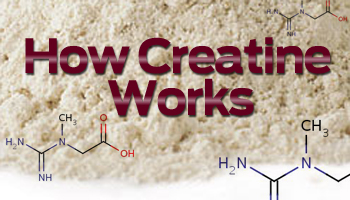 possibilities, anything is possible. And you might get struck by lightning and bitten by a shark too.
possibilities, anything is possible. And you might get struck by lightning and bitten by a shark too.
Mayo Clinic: Reports of other side effects include thirst, mild headache, anxiety, irritability, aggression, nervousness, sleepiness, depression, abnormal heart rhythm, fainting or dizziness, blood clots in the legs (called deep vein thrombosis), seizure, or swollen limbs.
JA: Depression? With the millions of creatine users in North America alone, one would think you’d have the offices of clinical psychologists lined up with depressed patients. Again, this is entirely taken out of context. Here is an excerpt from the report in which this ‘depression’ is based: “Eight unipolar and two bipolar patients with treatment-resistant depression were treated for four weeks with 3-5 g/day of creatine monohydrate in an open add-on design. Outcome measures were the Hamilton Depression Rating Scale, Hamilton Anxiety Scale, and Clinical Global Impression scores, recorded at baseline and at weeks 1, 2, 3 and 4. One patient improved considerably after one week and withdrew. Both bipolar patients developed hypomania/mania. For the remaining seven patients, all scale scores significantly improved. Adverse reactions were mild and transitory. This small, preliminary, open study of creatine monohydrate suggests a beneficial effect of creatine augmentation in unipolar depression, but possible precipitation of a manic switch in bipolar depression.” Did you read that? They gave creatine to unipolar and bipolar patients! Not exactly the demographic that walks into Vitamin Shoppe and buys creatine is it? And this passes for ‘evidence’ that it may cause depression. Now all the other nonsense listed by the Mayo Clinic is just that, nonsense. Again, sounding like a broken record; please read these papers which give you a broad overview of the creatine literature.[1, 4]
The Moral of the Story
Be smart; don’t be lazy; look up the data. And please don’t believe all the silly comments you hear from your friends or read on the internet. If you have questions about any sports nutrition topic, then for chrissakes, go to the original source. Read the science!
Remember, if you eat a lot of fish, you are eating a fair amount of creatine. Last time I checked, fish was one of the healthiest foods to consume on the planet. So for the naysayers, if you’re going to condemn creatine, you might as well put fish (and other meats) in that category. 
Nonetheless, the data supporting creatine’s safety and efficacy is as clear as the Montana sky. Do yourself a favor. Read the peer-reviewed science on creatine. Don’t succumb to the Google-induced idiocy when you do searches like “creatine and poop frequency,” or “creatine and repetitive TiVo watching of The View.” Yep, you can pretty much find anything on the web. If you’re convinced creatine supplementation causes a third eye to pop out in the middle of your forehead, then there’s no hope for you.
I’ll end this story with a quote by Dalbo et al: “Creatine is one of the most popular athletic supplements with sales surpassing 400 million dollars in 2004. Due to the popularity and efficacy of creatine supplementation over 200 studies have examined the effects of creatine on athletic performance. Despite the abundance of research suggesting the effectiveness and safety of creatine, a fallacy appears to exist among the general public, driven by media claims and anecdotal reports, that creatine supplementation can result in muscle cramps and dehydration. Although a number of published studies have refuted these claims, a recent position statement by the American College of Sports Medicine (ACSM) in 2000 advised individuals who are managing their weight and exercising intensely or in hot environments to avoid creatine supplementation. Recent reports now suggest that creatine may enhance performance in hot and/or humid conditions by maintaining haematocrit, aiding thermoregulation and reducing exercising heart rate and sweat rate. Creatine may also positively influence plasma volume during the onset of dehydration. Considering these new published findings, little evidence exists that creatine supplementation in the heat presents additional risk, and this should be taken into consideration as position statements and other related documents are published.[5]”

References
1. Buford TW, Kreider RB, Stout JR, Greenwood M, Campbell B, Spano M, Ziegenfuss T, Lopez H, Landis J, Antonio J: International Society of Sports Nutrition position stand: creatine supplementation and exercise. J Int Soc Sports Nutr 2007, 4:6.
2. Ferreira SC, Toledo AC, Hage M, Santos AB, Medeiros MC, Martins MA, Carvalho CR, Dolhnikoff M, Vieira RP: Creatine activates airway epithelium in asthma. Int J Sports Med 2010, 31:906-912.
3. Vieira RP, Duarte AC, Claudino RC, Perini A, Santos AB, Moriya HT, Arantes-Costa FM, Martins MA, Carvalho CR, Dolhnikoff M: Creatine supplementation exacerbates allergic lung inflammation and airway remodeling in mice. Am J Respir Cell Mol Biol 2007, 37:660-667.
4. Jager R, Purpura M, Shao A, Inoue T, Kreider RB: Analysis of the efficacy, safety, and regulatory status of novel forms of creatine. Amino Acids 2011, 40:1369-1383.
5. Dalbo VJ, Roberts MD, Stout JR, Kerksick CM: Putting to rest the myth of creatine supplementation leading to muscle cramps and dehydration. Br J Sports Med 2008, 42:567-573.
6. Greenwood M, Kreider RB, Greenwood L, Byars A: Cramping and Injury Incidence in Collegiate Football Players Are Reduced by Creatine Supplementation. J Athl Train 2003, 38:216-219.
7. Greenwood M, Kreider RB, Melton C, Rasmussen C, Lancaster S, Cantler E, Milnor P, Almada A: Creatine supplementation during college football training does not increase the incidence of cramping or injury. Mol Cell Biochem 2003, 244:83-88.
8. Candow DG, Little JP, Chilibeck PD, Abeysekara S, Zello GA, Kazachkov M, Cornish SM, Yu PH: Low-dose creatine combined with protein during resistance training in older men. Med Sci Sports Exerc 2008, 40:1645-1652.
9. Hile AM, Anderson JM, Fiala KA, Stevenson JH, Casa DJ, Maresh CM: Creatine supplementation and anterior compartment pressure during exercise in the heat in dehydrated men. J Athl Train 2006, 41:30-35.
 Results revealed a staggering 8% quicker time to completion during the time trial in the GF condition when compared with the G condition (times, 4022 s compared with 3641 s for FG and G, respectively). Total CHO oxidation did not differ significantly between GF (2.54 +/- 0.25 g∙min-1)and G (2.50 g∙min-1), indicating that there was a sparing of endogenous CHO stores in the GF trial, because GF has been shown to have a greater exogenous CHO oxidation than G.
Results revealed a staggering 8% quicker time to completion during the time trial in the GF condition when compared with the G condition (times, 4022 s compared with 3641 s for FG and G, respectively). Total CHO oxidation did not differ significantly between GF (2.54 +/- 0.25 g∙min-1)and G (2.50 g∙min-1), indicating that there was a sparing of endogenous CHO stores in the GF trial, because GF has been shown to have a greater exogenous CHO oxidation than G. BIO: Scott is a First Class Honours Sports Science graduate from the Research Institute of Sports and Exercise Sciences, at Liverpool John Moores University. He acquires a range of experience in both playing and coaching sport having represented Stoke City Football Club at Youth level and coached football at the International Youth Games. Scott has been an Assistant Sports Scientist at Blackburn Rovers Football Club and Everton Football Club for the 2010/2011 and 2011/2012 seasons, respectively. He has also partaken in Sports Science related research for FIFA, where he travelled across Europe as part of a multi-national team of sports scientists and athletes. Scott is currently completing his Masters of Science in Sports Physiology, where his research focuses on creating the optimal sports drink for soccer performance, after which he is due to begin a PhD within the Exercise Metabolism Research Group at the University of Birmingham, in September. Contact info: scottr38@hotmail.co.uk and Twitter is @scottrobinson8
BIO: Scott is a First Class Honours Sports Science graduate from the Research Institute of Sports and Exercise Sciences, at Liverpool John Moores University. He acquires a range of experience in both playing and coaching sport having represented Stoke City Football Club at Youth level and coached football at the International Youth Games. Scott has been an Assistant Sports Scientist at Blackburn Rovers Football Club and Everton Football Club for the 2010/2011 and 2011/2012 seasons, respectively. He has also partaken in Sports Science related research for FIFA, where he travelled across Europe as part of a multi-national team of sports scientists and athletes. Scott is currently completing his Masters of Science in Sports Physiology, where his research focuses on creating the optimal sports drink for soccer performance, after which he is due to begin a PhD within the Exercise Metabolism Research Group at the University of Birmingham, in September. Contact info: scottr38@hotmail.co.uk and Twitter is @scottrobinson8


 mankind. For a copy of the report, go to
mankind. For a copy of the report, go to  mean aspirin works (for treating headaches)? Or not? Scientific conclusions are based on the PREPONDERANCE of the evidence. And it is clear that the preponderance of the evidence points to a robust ergogenic response from creatine supplementation. Sure, it doesn’t work for everyone. But then again what does? For a scientific summary of creatine, please read the ISSN’s Position paper on creatine.[
mean aspirin works (for treating headaches)? Or not? Scientific conclusions are based on the PREPONDERANCE of the evidence. And it is clear that the preponderance of the evidence points to a robust ergogenic response from creatine supplementation. Sure, it doesn’t work for everyone. But then again what does? For a scientific summary of creatine, please read the ISSN’s Position paper on creatine.[ h.
h.  Sports Medicine, “Recent reports now suggest that creatine may enhance performance in hot and/or humid conditions by maintaining haematocrit, aiding thermoregulation and reducing exercising heart rate and sweat rate. Creatine may also positively influence plasma volume during the onset of dehydration. Considering these new published findings, little evidence exists that creatine supplementation in the heat presents additional risk, and this should be taken into consideration as position statements and other related documents are published.”[
Sports Medicine, “Recent reports now suggest that creatine may enhance performance in hot and/or humid conditions by maintaining haematocrit, aiding thermoregulation and reducing exercising heart rate and sweat rate. Creatine may also positively influence plasma volume during the onset of dehydration. Considering these new published findings, little evidence exists that creatine supplementation in the heat presents additional risk, and this should be taken into consideration as position statements and other related documents are published.”[


